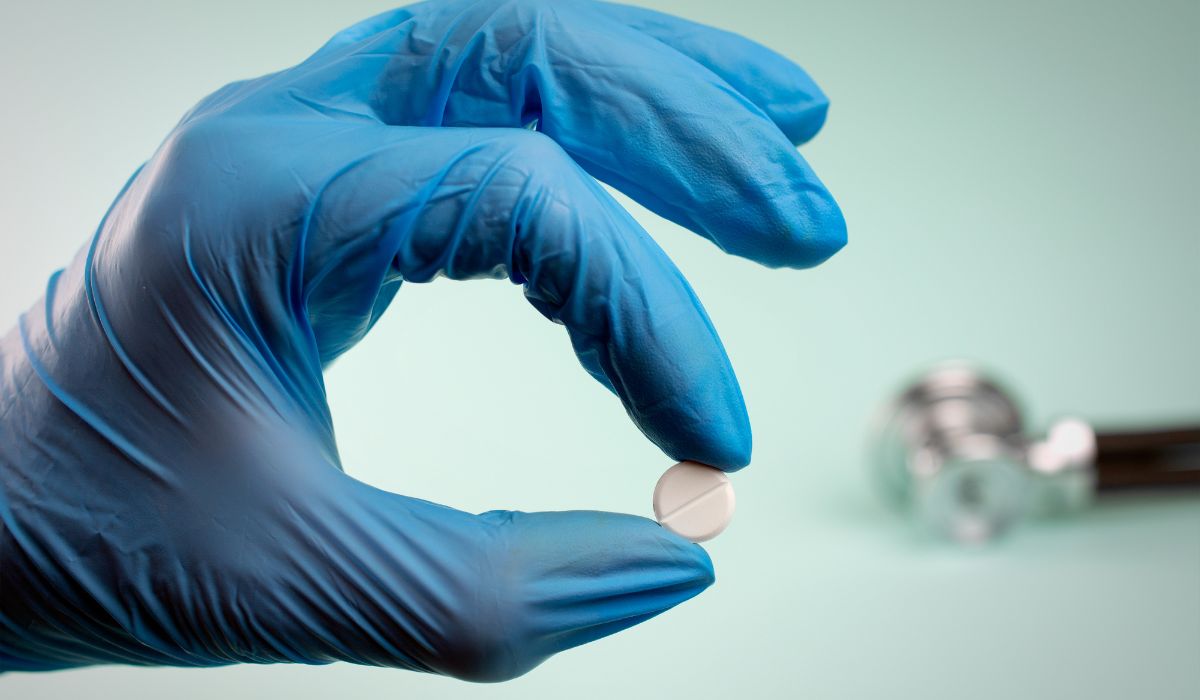What Is Tramadol?
Tramadol is a prescription drug used to treat pain. It’s known as an analgesic and is part of a group of drugs called opioids. It helps by blocking pain messages from the nervous system to the brain.
Doctors may give tramadol in tablet, capsule, or liquid form. It’s often used for people with back pain, after surgery, or during cancer treatment. Tramadol works by changing how the brain feels pain using neurotransmitters like serotonin and norepinephrine.
But some people wonder: Can tramadol get you high? Let’s talk about that.

Can Tramadol Get You High?
Yes, tramadol can get you high, but it’s not safe. When taken in large doses, it can make you feel euphoria, which means a big, strong feeling of happiness. This high happens because tramadol acts on the opioid receptor in your brain. This is the same part of the brain that drugs like oxycodone, morphine, and codeine work on.
Tramadol can affect your mood, your mind, and your body. Some people feel dizziness, fatigue, or weakness. Others may feel confused, get headaches, or even hallucinate (see or hear things that aren’t there). That’s because tramadol also affects the central nervous system.
Why People Might Misuse Tramadol
Some people misuse tramadol to feel good or escape feelings of anxiety, panic, or major depressive disorder. Others use it with alcohol, methamphetamine, or other drugs, which can be very dangerous. This is called polysubstance use.
Using tramadol to get high is a form of substance abuse. It can lead to prescription drug addiction, and the body may develop physical dependence. This means the body needs more and more of the drug to feel the same way.

What Happens When You Take Too Much Tramadol?
Taking too much tramadol is very risky. It can cause:
-
Slow breathing or shallow breathing
-
Low blood pressure
-
Bradycardia (slow heart rate)
-
Coma
-
Even death
If tramadol is mixed with other depressants like alprazolam, clonazepam, or benzodiazepines, the risk of an opioid overdose goes way up.
If someone has taken too much tramadol, doctors may use naloxone, a medicine that helps stop an overdose.
Is Tramadol Addictive?
Yes, tramadol is addictive. Even though some people think it’s safer than other opioids like fentanyl, hydrocodone, or methadone, that’s not true. Tramadol can still lead to opioid use disorder, which is a type of disease that affects the brain and behavior.
People addicted to tramadol may show:
-
Trouble stopping use
-
Craving the drug
-
Using without a physician’s consent
-
Mood swings
-
Changes in attention and sleep
-
Problems with weight loss, appetite, or sexual intercourse
Withdrawal Symptoms of Tramadol
When someone stops using tramadol after using it for a long time, they might go through withdrawal. This means the body reacts badly to not having the drug. Symptoms may include:
-
Muscle pain
-
Rhinorrhea (runny nose)
-
Diarrhea
-
Goose bumps
-
Itchy skin
-
Insomnia
-
Nose and mouth discomfort
-
Stomach pain
-
Changes in pupil size
-
Sweating
-
Feeling nervous or angry
How Tramadol Affects Mental Health
Tramadol doesn’t just affect the body—it also hurts the mind. It can cause:
-
Depression
-
Anxiety
-
Psychosis
-
Cognitive impairment (trouble thinking or remembering)
People with bipolar disorder, attention deficit hyperactivity disorder, or other mental health conditions are at higher risk. Mixing tramadol with drugs like amphetamine or adderall makes this worse.
What the Experts Say
Groups like the Food and Drug Administration (FDA) and the Drug Enforcement Administration (DEA) say tramadol is a controlled substance. That means it can be dangerous and is watched closely by the government.
Doctors, psychiatry experts, and psychology teams warn patients not to take tramadol unless it’s truly needed and always as directed.
What to Do if You’re Struggling
If you or someone you love is misusing tramadol, there is help. You can go to:
-
A medical detox center
-
A dual diagnosis rehab (for both addiction and mental health)
-
A health care clinic
-
Programs with peer support
Places like American Addiction Centers and other trusted facilities offer full information and treatment.
Treatment Options for Tramadol Addiction
There are several ways to get help:
-
Detox: Helps clean the drug out of your body safely
-
Therapy: Helps deal with emotions, thoughts, and behavior
-
Medication: Drugs like naltrexone or buprenorphine help reduce cravings
-
Support groups: People help each other stay on the path to sobriety
-
Insurance: Many treatments are covered under health insurance
Is Tramadol Safe During Pregnancy?
Tramadol should not be used during pregnancy unless a physician says it’s okay. It may hurt the baby’s lungs, heart, or cause problems during birth. Babies born to mothers who used tramadol may go through withdrawal.
The Role of Tramadol in Pain Management
Tramadol is used in pain management, especially when other drugs don’t work. But it should only be used under a doctor’s care and for a short time. Doctors will check your dose, efficacy (how well it works), and how your body reacts.
If you have other conditions like asthma, heartburn, edema, or problems with the liver, tramadol may not be right for you.
What the Research Says
A systematic review and qualitative research studies show tramadol carries real risks. While it works for pain, it can lead to abuse, overdose, and serious side effects. Researchers warn about tramadol’s effect on the respiratory system, heart rate, pressure, and overall health.
If you or a loved one is struggling with tramadol or any prescription drug addiction, don’t wait. Getting the right information and support can save a life.
Recovery starts with one step. And that step starts with you.

Seeking Treatment? We Can Help!
We work with PPO Out of Network Health Insurance Policies
If you or a loved one are struggling with mental health challenges or substance abuse, reach out to Mountain Sky Recovery today. Our team of compassionate professionals is here to support your journey towards lasting well-being. Give us a call at 951-498-5412. Visit SAMHSA for more information.



